Intro
Discover symptoms of difficulty swallowing, including dysphagia, choking, and throat pain. Learn about causes, diagnosis, and treatment options for swallowing disorders, and find relief from esophageal issues and related conditions.
Difficulty in swallowing, also known as dysphagia, is a common condition that affects millions of people worldwide. It can be a symptom of various underlying health issues, ranging from mild to severe. The importance of addressing swallowing difficulties cannot be overstated, as it can lead to malnutrition, dehydration, and even respiratory problems if left untreated. In this article, we will delve into the world of dysphagia, exploring its causes, symptoms, diagnosis, and treatment options.
Swallowing is a complex process that involves the coordination of multiple muscles and nerves. When we eat or drink, the food or liquid passes through the mouth, pharynx, and esophagus, eventually reaching the stomach. However, when this process is disrupted, it can lead to difficulty in swallowing. The symptoms of dysphagia can vary depending on the underlying cause, but common signs include coughing or choking while eating, food getting stuck in the throat, and difficulty initiating swallows.
The prevalence of dysphagia is significant, affecting people of all ages and backgrounds. According to the National Institute of Diabetes and Digestive and Kidney Diseases, approximately 15% of adults in the United States experience some form of swallowing difficulty. This condition can have a profound impact on a person's quality of life, making everyday activities like eating and drinking a challenge. Moreover, dysphagia can lead to social isolation, as individuals may avoid social gatherings or meals with friends and family due to embarrassment or fear of choking.
Dysphagia Causes and Risk Factors
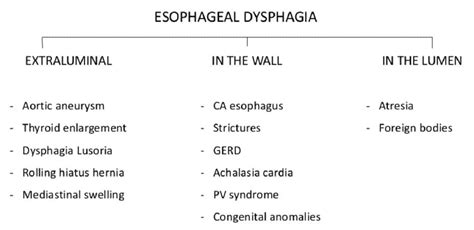
Neurological Causes of Dysphagia
Neurological disorders can affect the brain's ability to coordinate the swallowing process. Conditions like stroke, traumatic brain injury, and multiple sclerosis can damage the nerves responsible for swallowing, leading to dysphagia. In these cases, the difficulty in swallowing is often accompanied by other symptoms like speech difficulties, weakness, or numbness in the face and arms.Structural Abnormalities and Dysphagia
Structural abnormalities, such as narrowing or blockage of the esophagus, can also cause dysphagia. Esophageal cancer, for example, can lead to difficulty swallowing as the tumor grows and obstructs the passage of food. Similarly, conditions like esophageal stricture or achalasia can cause the esophagus to narrow, making it harder for food to pass through.Dysphagia Symptoms and Diagnosis
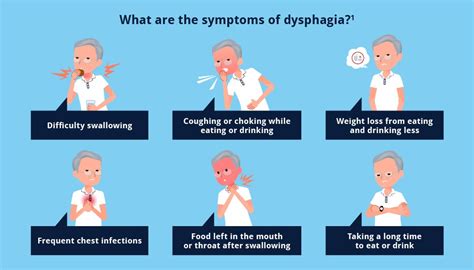
Diagnostic Tests for Dysphagia
Diagnostic tests play a crucial role in identifying the underlying cause of dysphagia. Endoscopy, for example, involves inserting a flexible tube with a camera and light on the end to visualize the esophagus and stomach. Barium swallow, on the other hand, involves swallowing a liquid containing barium, which shows up on X-rays and can help identify any blockages or narrowing of the esophagus. Manometry measures the muscle contractions of the esophagus, helping to diagnose conditions like achalasia or diffuse esophageal spasm.Treatment Options for Dysphagia
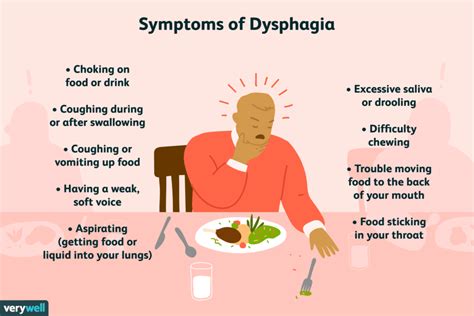
Swallowing Therapy for Dysphagia
Swallowing therapy is a type of rehabilitation that aims to improve the coordination and strength of the muscles involved in swallowing. SLPs use various techniques, such as exercises, maneuvers, and compensatory strategies, to help individuals with dysphagia swallow more safely and effectively. Swallowing therapy can be tailored to meet the individual needs of each patient, taking into account the underlying cause and severity of the condition.Living with Dysphagia
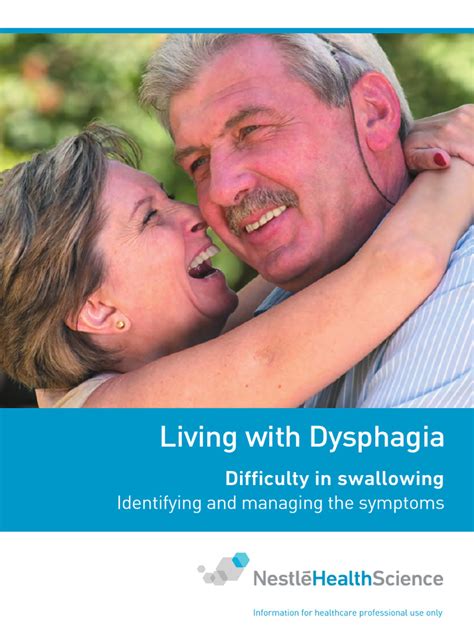
Coping with Dysphagia
Coping with dysphagia requires a combination of physical, emotional, and social support. Individuals with dysphagia may need to make significant changes to their diet and eating habits, which can be frustrating and isolating. However, with the right support and resources, individuals with dysphagia can learn to manage their condition and maintain a healthy, active lifestyle.Future Directions in Dysphagia Research
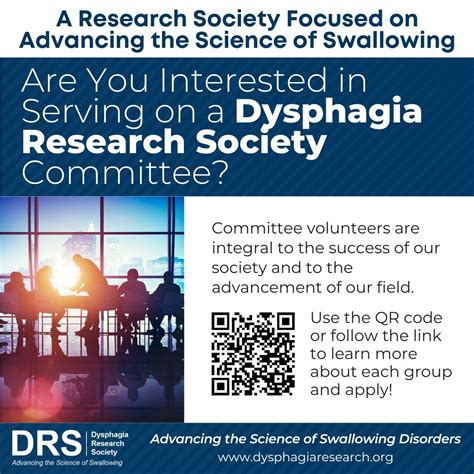
Emerging Trends in Dysphagia Treatment
Emerging trends in dysphagia treatment include the use of non-invasive brain stimulation, such as transcranial magnetic stimulation (TMS) or transcranial direct current stimulation (tDCS). These techniques aim to improve the coordination and strength of the muscles involved in swallowing, and may offer new hope for individuals with dysphagia. Additionally, advances in robotics and artificial intelligence may lead to the development of new devices and systems to help individuals with dysphagia eat and drink more safely and independently.Conclusion and Final Thoughts
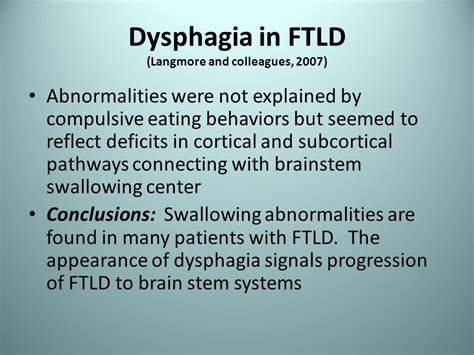
What are the common symptoms of dysphagia?
+The common symptoms of dysphagia include difficulty swallowing solids or liquids, coughing or choking while eating, and food getting stuck in the throat.
What are the causes of dysphagia?
+Dysphagia can be caused by a variety of factors, including neurological disorders, structural abnormalities, and certain medical conditions like stroke, Parkinson's disease, and esophageal cancer.
How is dysphagia diagnosed?
+Dysphagia is typically diagnosed through a combination of physical examination, medical history, and diagnostic tests like endoscopy, barium swallow, or manometry.
What are the treatment options for dysphagia?
+Treatment for dysphagia depends on the underlying cause and severity of the condition, and may include dietary changes, swallowing therapy, medication, surgery, or other interventions like dilation or stenting.
How can I manage dysphagia?
+Managing dysphagia requires a combination of physical, emotional, and social support, and may involve working with a healthcare team, including speech-language pathologists, doctors, and dietitians, to develop a personalized treatment plan.
